My grandfather, Joseph Eggleston, was a dairy farmer. After finding some interesting records, I thought it would be good to document his dairy farming history. He had a ranch on Mormon Row in Jackson Hole, then sold it and returned to Eden, Utah where he had been born and where he farmed for the rest of his life.
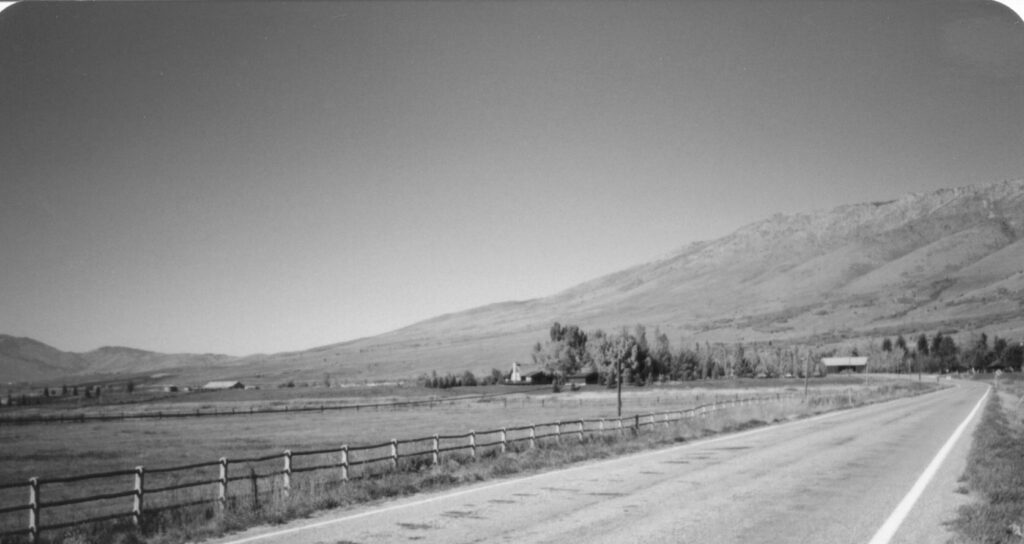
This Eden farm was the only home I remember of his. I remember the barn, though I personally didn’t spend much time there. Most of my memories include the smell of the barnyard, drinking warm fresh milk and the butter Grandma Stella made.
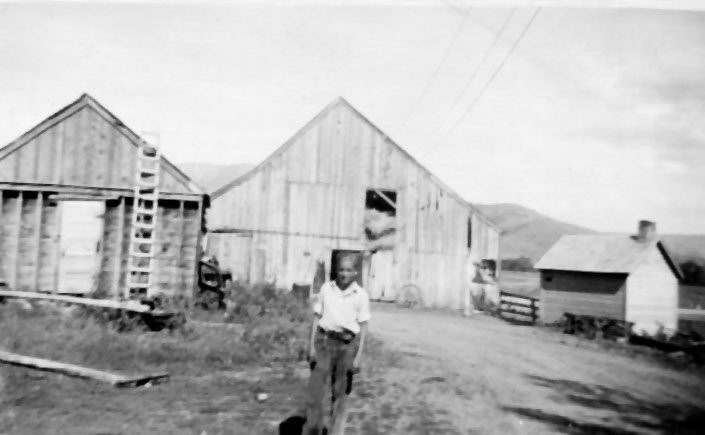
Joseph Eggleston was a card carrying member of the Utah State Farm Bureau Federation.
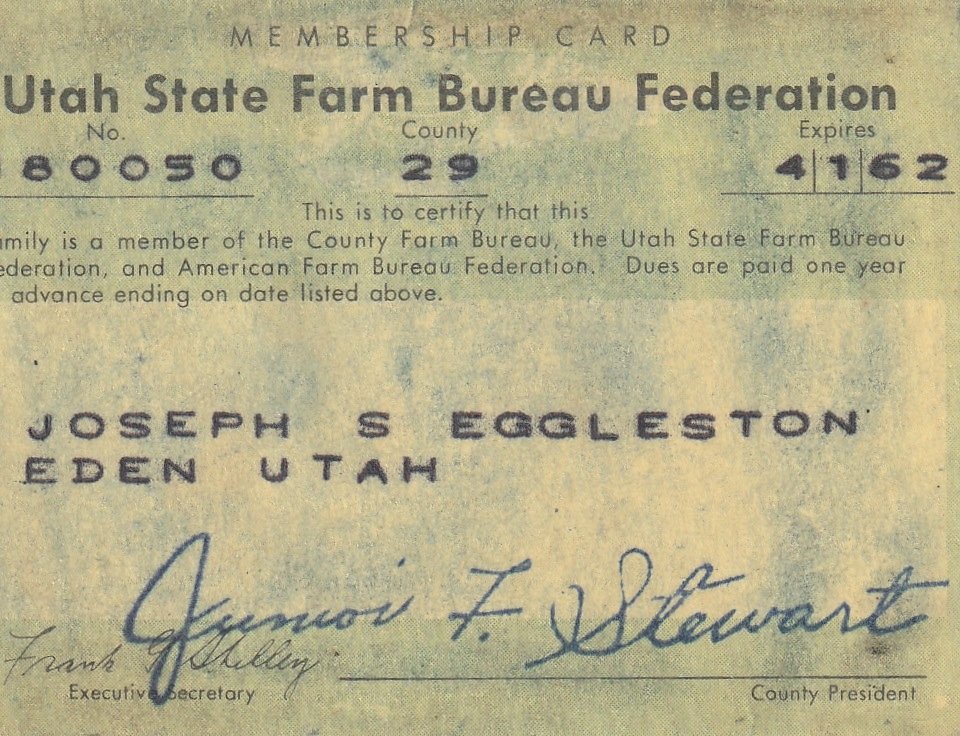
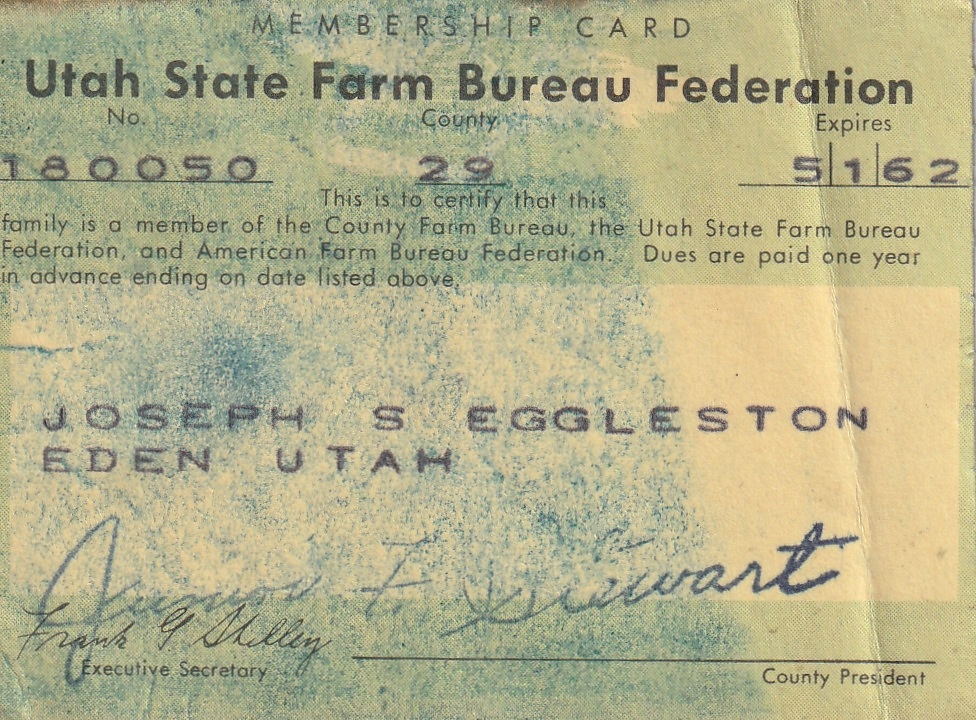
Grandpa’s Brand
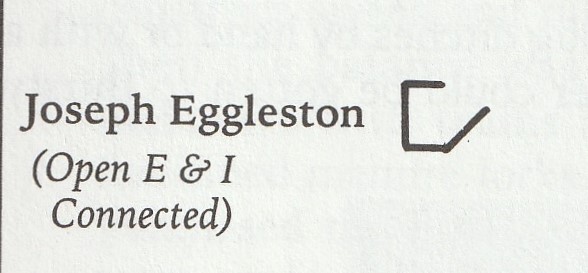
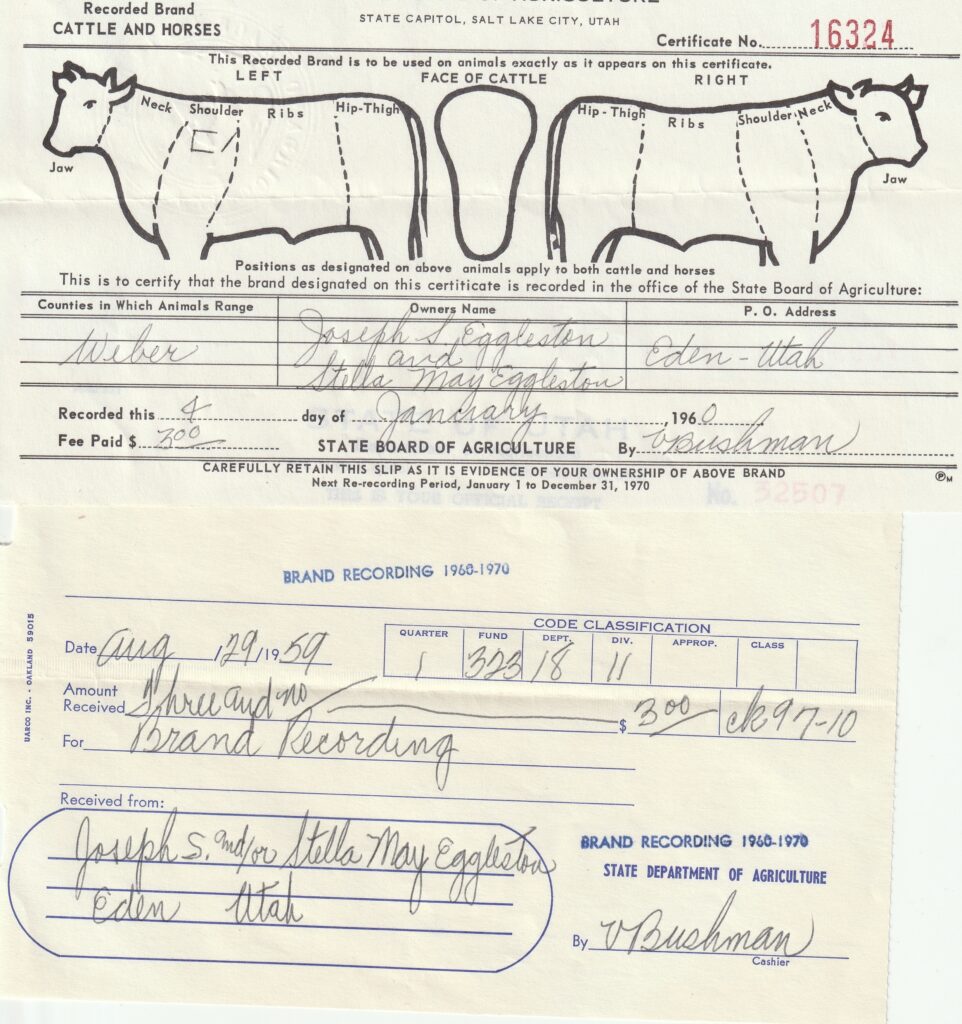
Herd-Record Books
Being a city girl, I had no idea that Herd Books were even a thing. Then when I was going through documents from Dad’s house I came across two booklets titled “Herd-Record Book”. One was dated 1938-1939 and the other 1946-1947. These were prepared by the United States Department of Agriculture, Agricultural Research Administration, Bureau of Dairy Industry, for the Dairy Herd Improvement Association. Sounds like a lot of bureaucratic layers – with an additional layer in the later book. It appears that these were used to research and record the productivity of dairy herds. There were “testers” involved in filling out these records. The purpose for this study was to “identify the low-producing cows so that they may be discarded.”
These booklets are full of meticulously recorded information. It appears that grandpa participated in this testing at least two different times, but it probably wasn’t a regular thing. These records do give an idea of what was involved with dairy farming and help us become acquainted with grandpa’s herd.
The 1938-1939 Herd Record Book
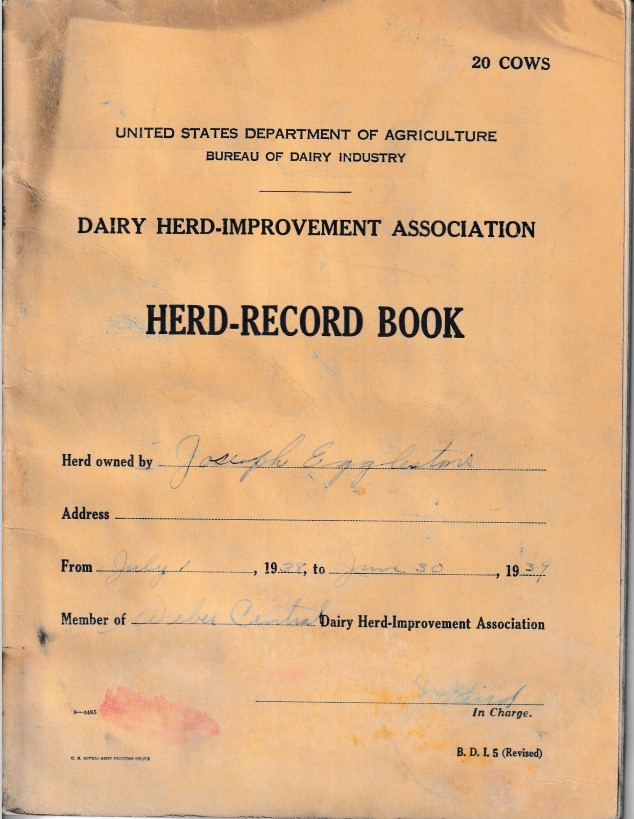
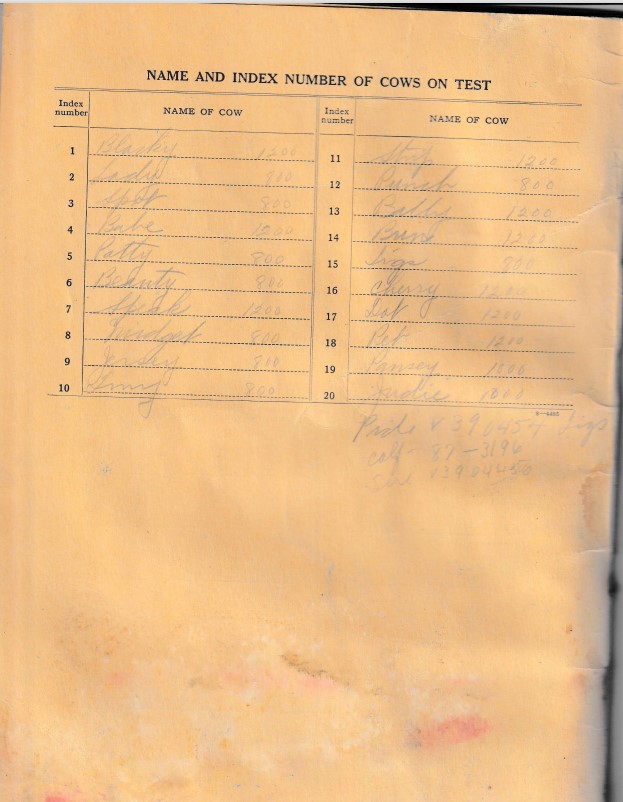
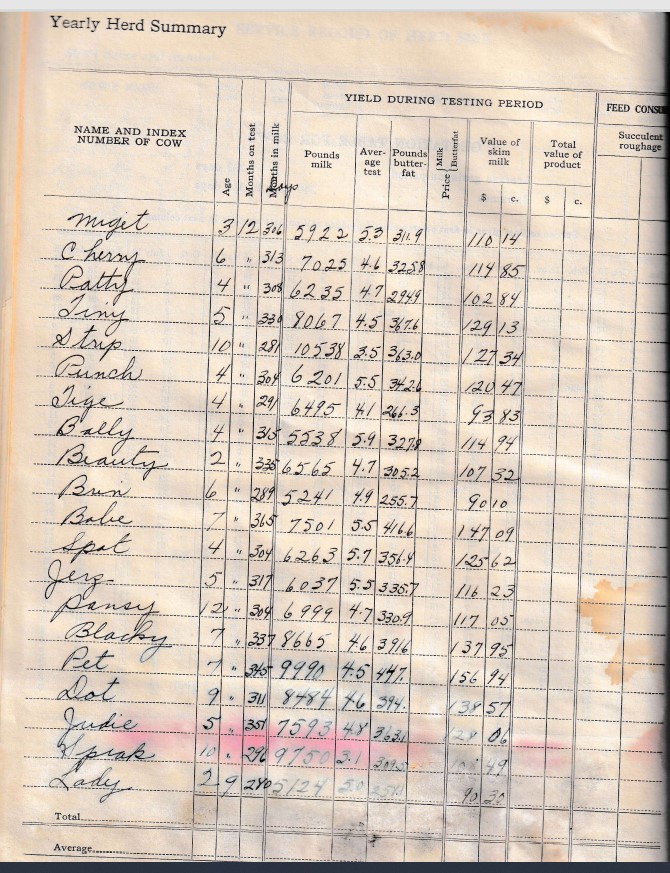
Ir looks like 10-year-old Strip produced the most pounds of milk at 10,538, but 7-year-old Pet had the highest value of skim milk $156.94 and the most pounds of butter-fat.
The milk production of each Cow was recorded on separate pages in the Herd Book. Some with additional information.
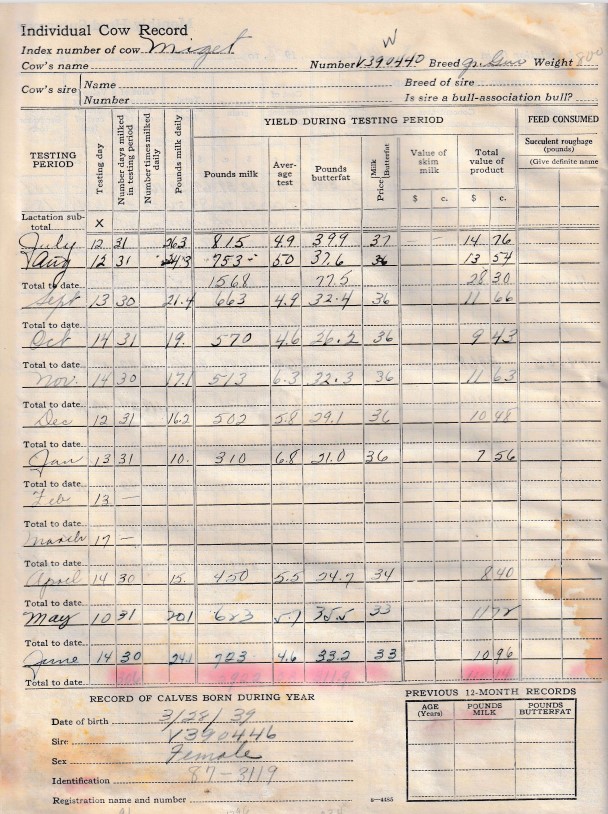
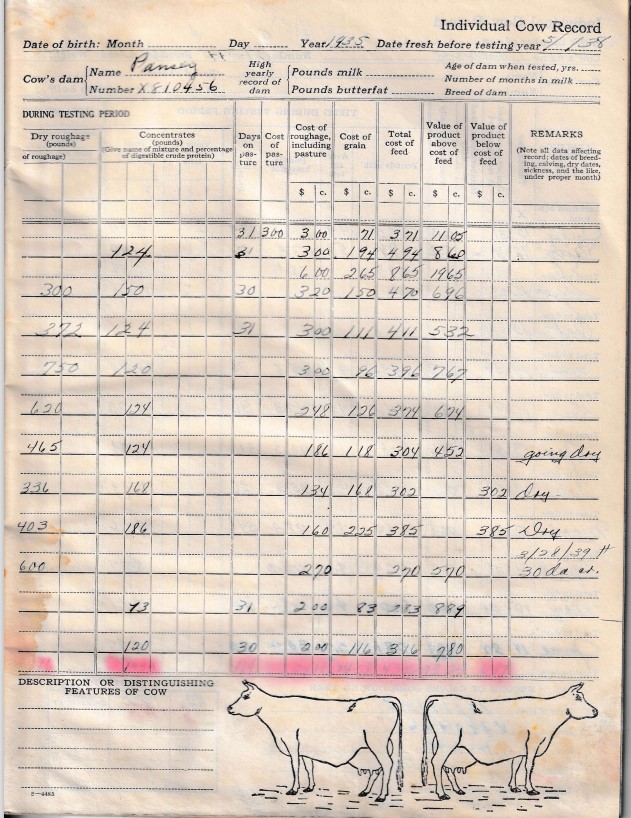
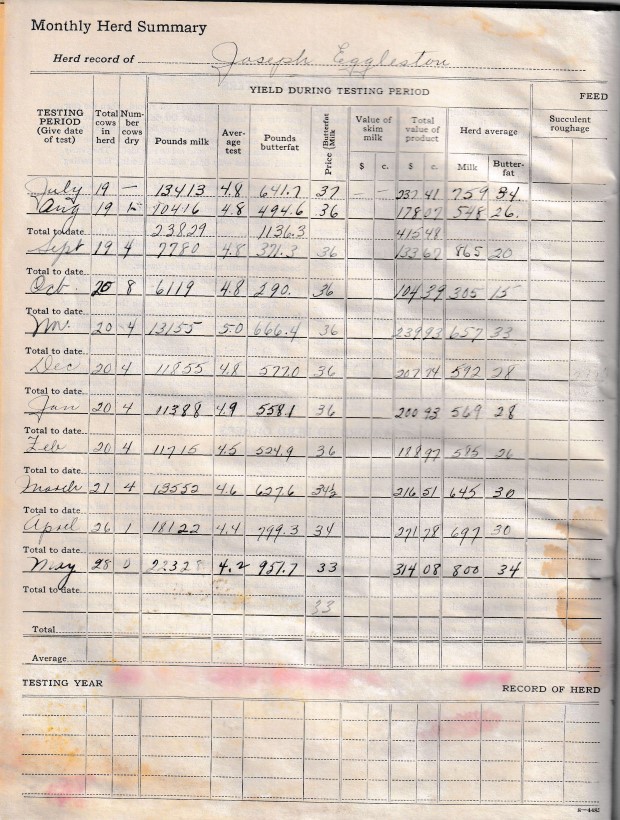
These Monthly Summary pages show how much milk and butter fat was produced each month, as well as how much feed the cows consumed during the same period of time. It really was a science.
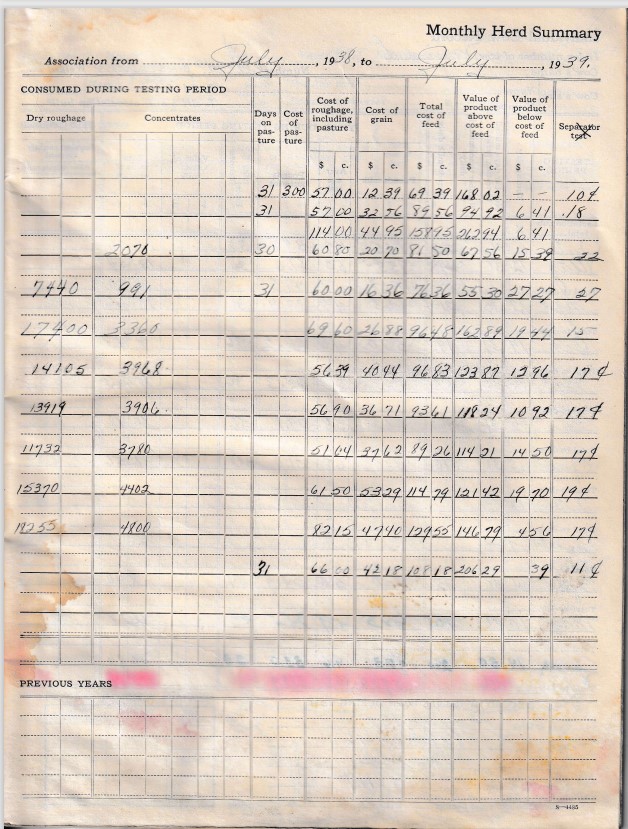
The 1946-47 Herd-Record Book
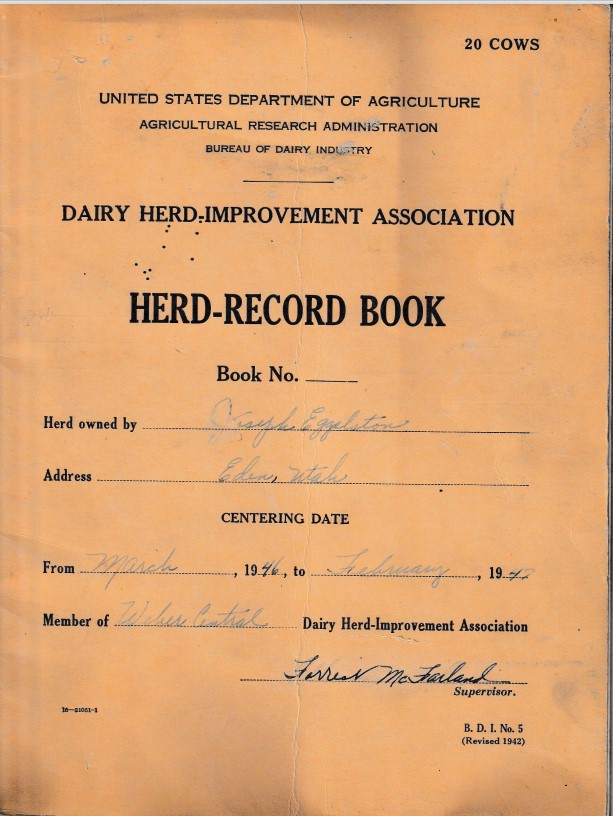
This Herd-Record Book covers the year from March 1946 to February 1947. This booklet is not as complete as the earlier one. The inside cover which should include a list of the cows was not filled out. Though the book has space for 20 Cows, there are only pages recording 16 cows, with the last page being another titled Judy but only covering the month of February, and the next to last page for Lill includes only the month of February.
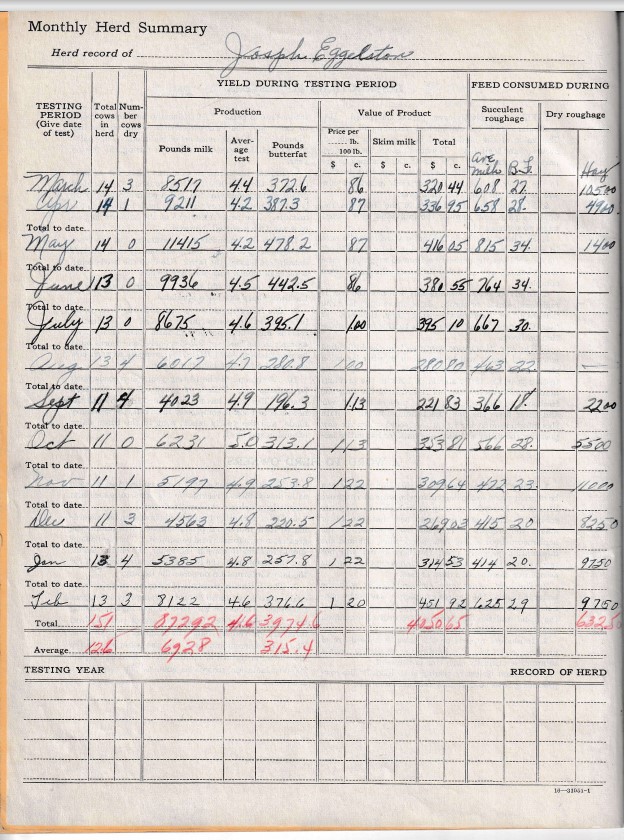
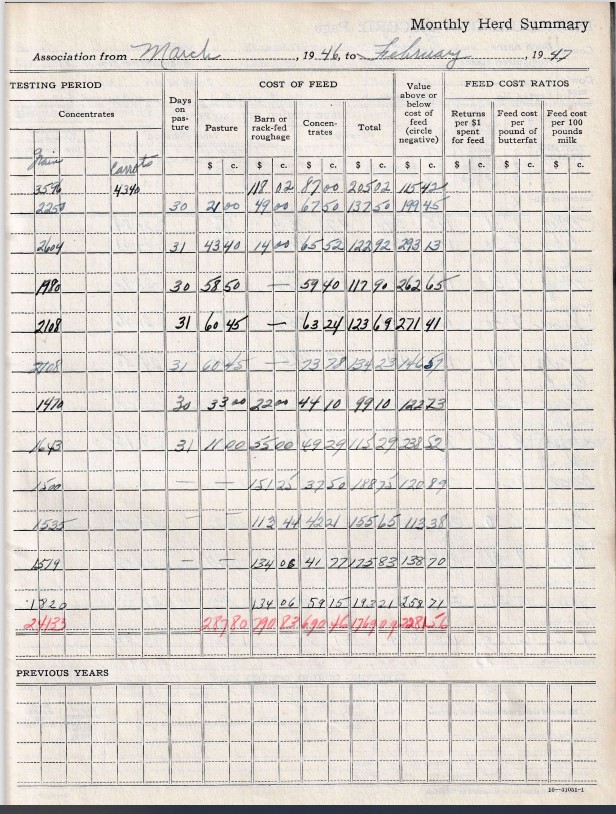
Most of the names of the cows in this later book are different than in the first one. The five that are the same are Judie/Judy, Patty, Spot, Lady and Beauty. They were some of the younger ones on the Yearly summary list of the earlier book – ages 2-5. It appears that the “low producing” cows were “discarded” by being sold for beef.
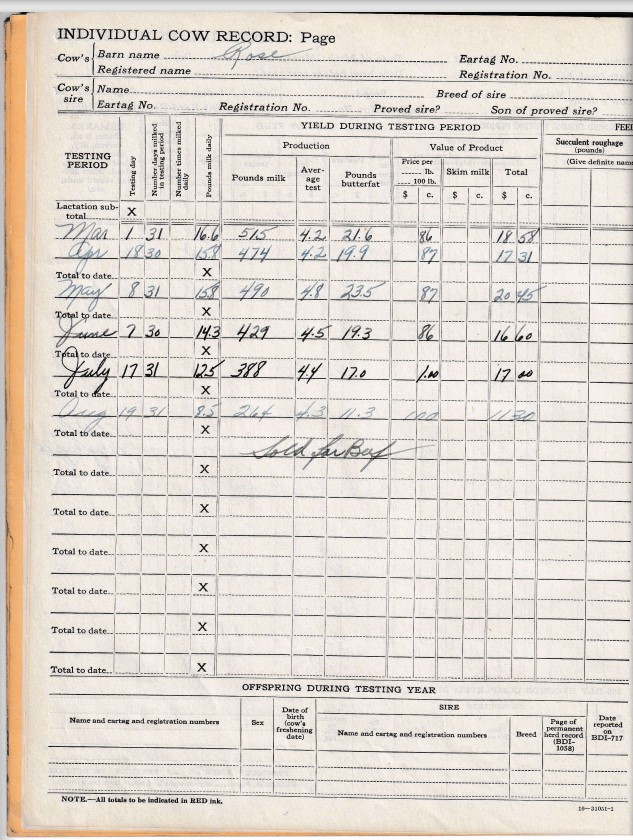
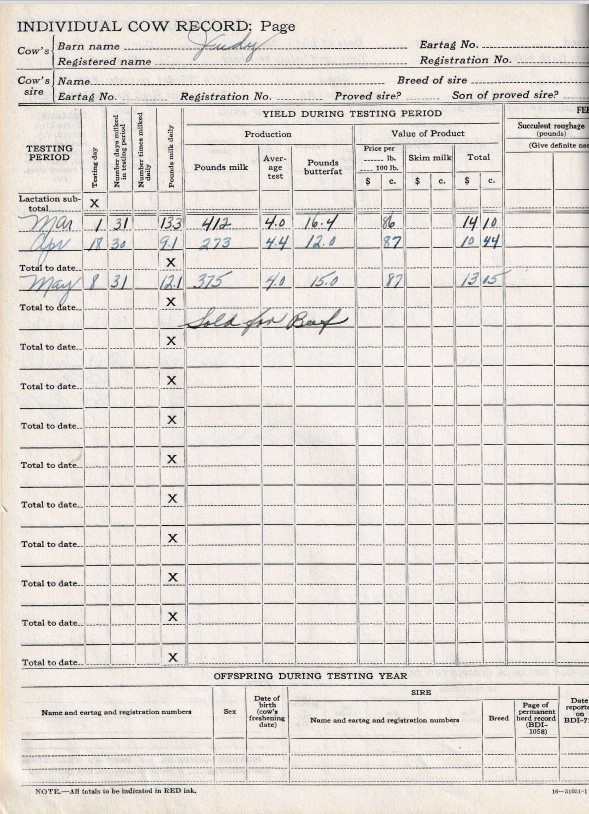
This later book does not have the Yearly Summary pages filled out, which suggests that either the study was not completed or just not done as thoroughly.
The Milk Route
Grandpa was not only a dairy farmer, but he delivered milk to the dairy. In 1938, he contracted with the Weber Central Dairy to collect milk from dairy farms in Eden and drive it down Ogden Canyon to the dairy in Ogden City. He later added the town of Liberty to his route. It was said that Grandpa was very punctual with this job. It required that he milk his own cows very early in the morning before picking up milk from the other farmers. He had acquired a milking machine, but with 20 cows it still would have taken considerable time.
Grandpa recruited his sons to join him in this work. The older sons, Orland, Mel and Dale would pick up milk from Eden farmers, while Grandpa picked up milk in neighboring Liberty. They would meet and load all the cans into the truck which Grandpa would drive down the canyon to the dairy. Later, after Orland left home and Doc got older, he would accompany his father through Liberty while Mel and Dale would gather the Eden milk. During the school year, all of the milk gathering had to be completed before the boys would need to catch the bus to school. During the summer months they could accompany their father to the dairy in town.
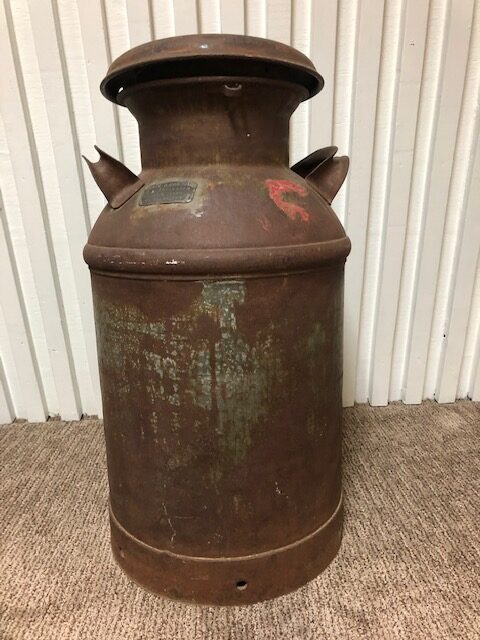

This label is on the milk can. (Someone spelled his name wrong) I am not sure if all the cans had these labels or if some just had a painted mark like the red one or some other way to identify whose can it was. Grandpa would have had to return the empty cans to the right farms.
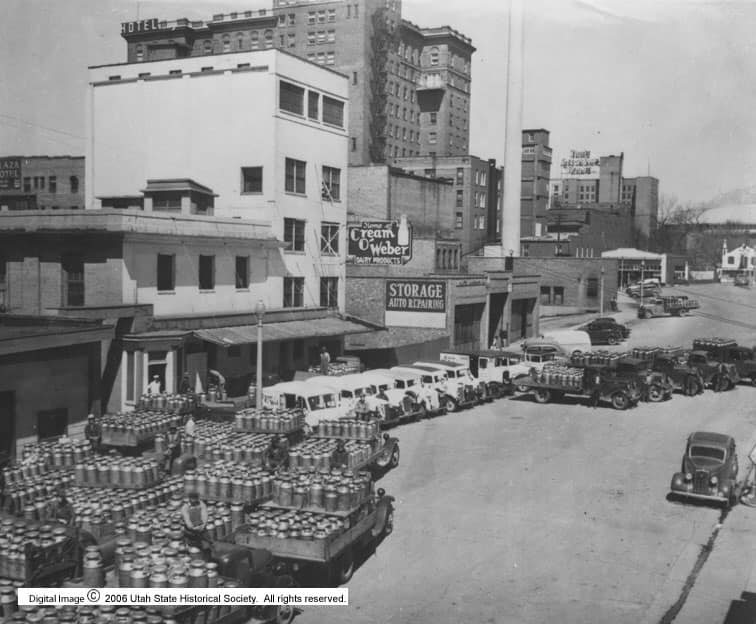
Note: I did scan all of the filled in pages in the two Herd-Record books, so they are available if anyone is interested. The photo of the brand is from Candy Vivey Moulton’s book Legacy of the Tetons: Homesteading in Jackson Hole.
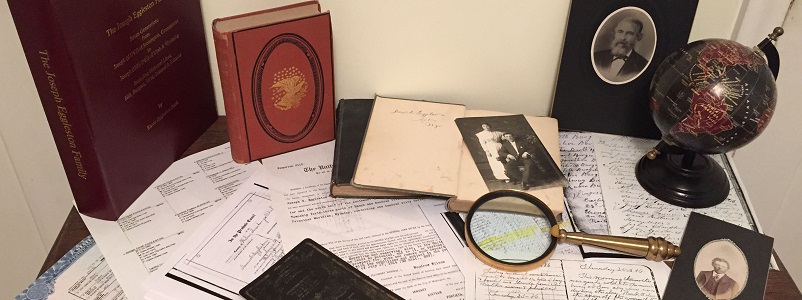
Never having grown up around a dairy operation I found this very interesting. It’s a nice collection of things that you have to write about! Despite our being so far apart genetically, I always feel I am reading about “extended family”.
Karla, It was a learning experience for me too. I love reading your blog about your mother.
Thanks for sharing. I always thought that both of my grandfathers were dairy farmers (because that’s how my mother referred to them). Guess I thought wrong. I don’t remember a lot about Grandpa Eggleston’s farm, But I do remember Grandpa Willliams. Mostly I remember the smell.